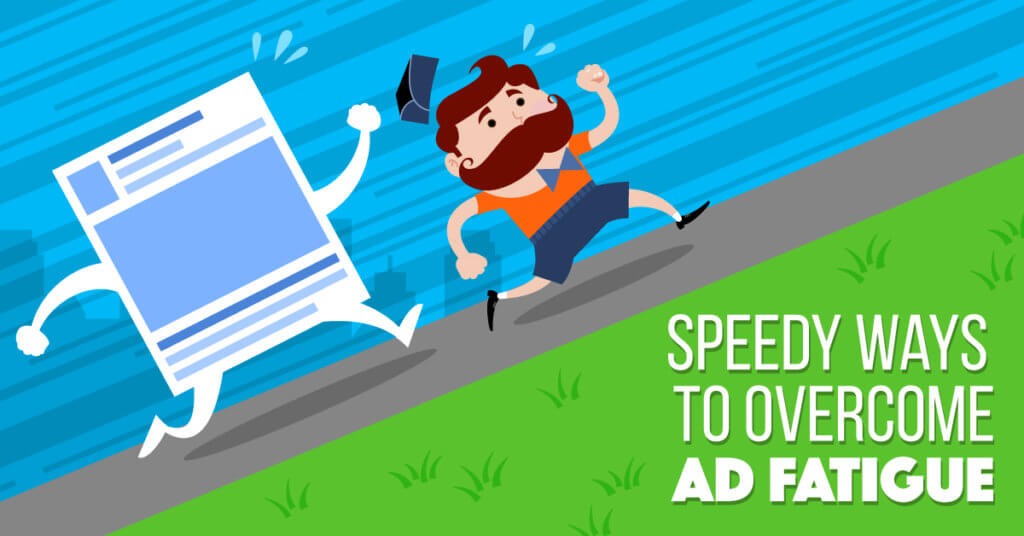
22 Jul 12 Speedy Ways to Overcome Ad Fatigue (And Keep Down Your Cost-per-action)
[ad_1]
Imagine…
You’ve run a Facebook ad campaign for about three weeks and suddenly, a few things start to happen.
First, you’ll see your cost-per-click go up. Next, you’ll notice that your ads’ frequency rate is up in the sky.
So you log into your Facebook Ads Manager, and here’s what you’ll see:

And suddenly, you feel like:
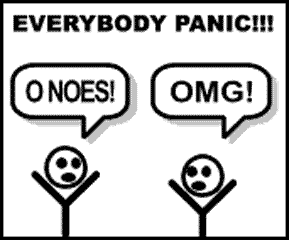
Source: knowyourmeme.com
Sounds familiar? Come on, we’ve all been there.
Here’s good news. We’re here to show you how to avoid this situation in the future.
Let’s start with the basics.
The scary marketer’s nightmare we just described is commonly referred to as Ad Fatigue – the moment when your customers have seen your ads for so many times, they’ll start to get annoyed.
Like that’s not enough of a burden, there’s this monster called Banner Blindness, reaching its sneaky clawed hands to your customers, luring them away from seeing your ads.
If Facebook advertising were a computer game, you would see Ad Fatigue busting your hero and your click-through health bar steadily declining.
So what’s the magical potion to overcome ad fatigue?
In my experience, there are several cures to declining ad performance. Ready to find your own solution and beat the Banner Blindness monster?
The game is on!
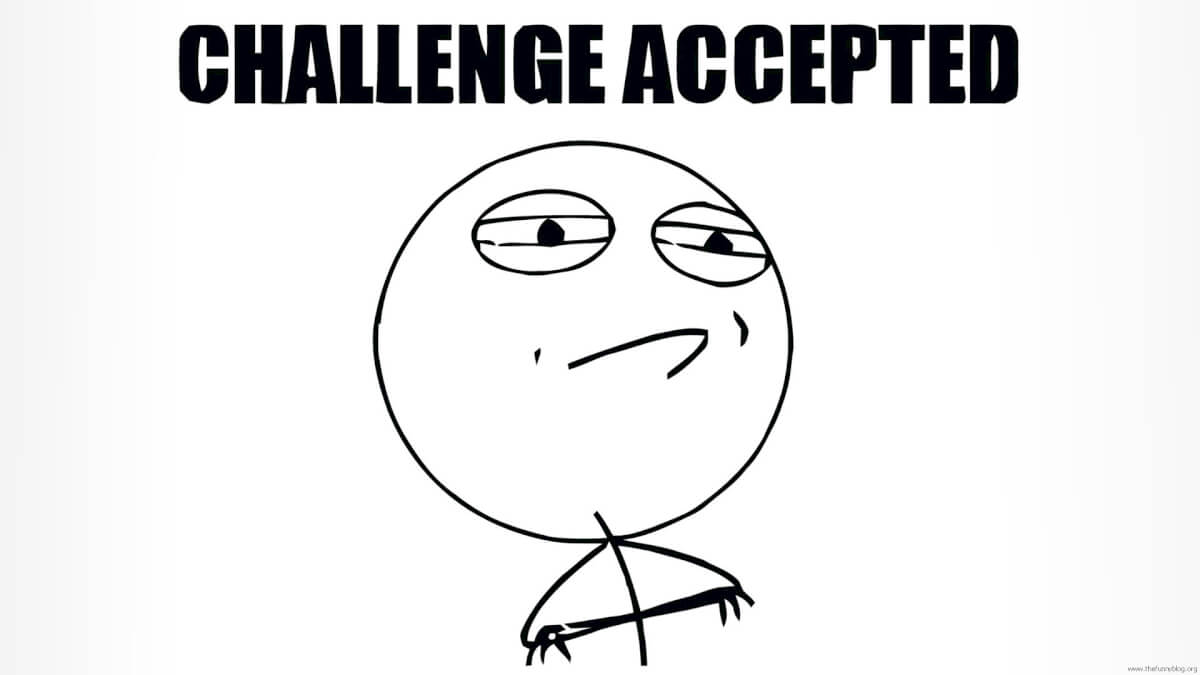
Image source: memesvault.com
1. Keep your ad frequency low
Unless you’re targeting an audience of several million people, Facebook will start re-showing your ads to your audience.
That’s how you’ll reach a high ad frequency, meaning that the same user has seen a particular ad for already 5 or 10 times.
As you might imagine, seeing the same advertisements all over again can get quite annoying.
AdEspresso ran an analysis of how ad frequency affects the click-through rate, cost-per-click and cost-per-conversion of ad campaigns. Here’s what they found:
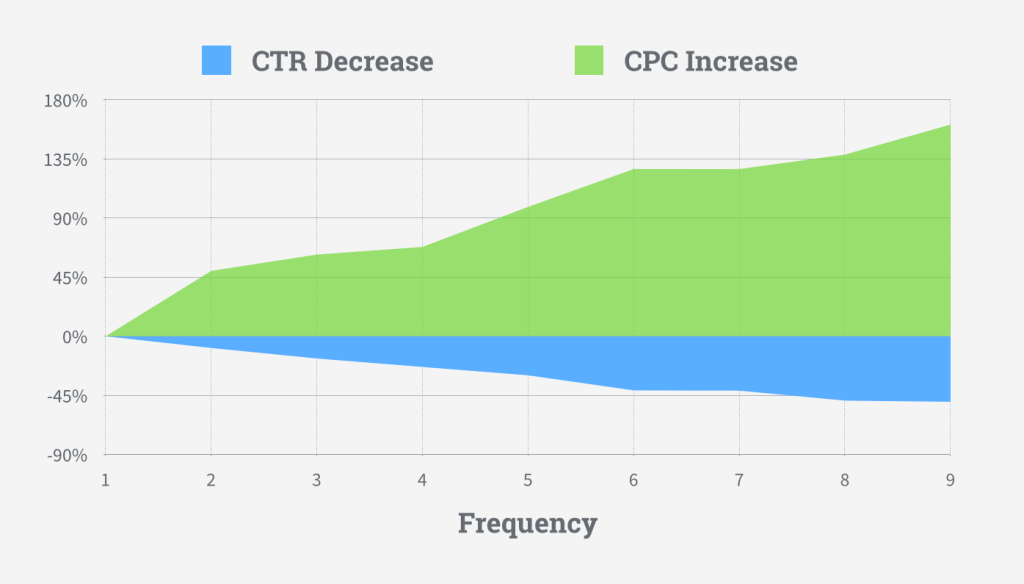
When people saw the same ads twice, the CTR decrease was 8.91%. But when shown repetitive ads for 4 times, the CTR was already 23.34% higher.
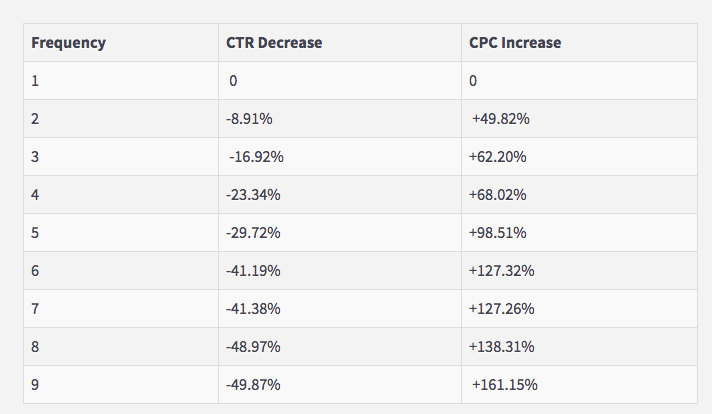
So how can you keep your ad frequency low?
The best suggestion ever given to me is to keep your eye on the metrics. You want to be in the know when your ad frequency gets close to 3 points.
To check this metric, go to Facebook Ads Manager, click on a campaign, and in the reporting section select the Delivery view.
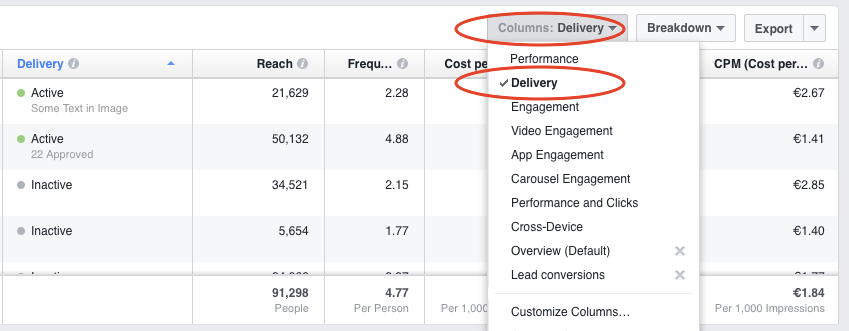 If your ad frequency is over 3, it’s best to pause the ads and create new ones with different messages or layout. Or to follow the other suggestions presented in this guide.
If your ad frequency is over 3, it’s best to pause the ads and create new ones with different messages or layout. Or to follow the other suggestions presented in this guide.
2. Set up optimization rules based on ad frequency
If you’re busy with work and think you’ll forget to regularly check your ad frequency, here’s a quick fix.
Use a Facebook ad automation tool to set up a rule that optimizes your campaigns without your everyday input.
In Scoro, we use AdEspresso to set up rules that pause each ad with the frequency of over 3 points.

It took about 1 minute to create the rule and 4 minutes to apply it to all our campaigns. We’ll end up saving hours of time and hundreds of dollars. And so can you.
3. Use different ad placements
Using Desktop, Mobile, and Audience Network placements all for the same ad group ensures a higher number of likes and shares under each ad.
But it also leads to Facebook’s auto-optimization to prefer one placement with the lowest cost-per-engagement to others.
For example, if your ads shown in the Audience Network have a significantly lower cost-per-click (which they usually do), Facebook will allocate more budget to this ad placement.
There are two problems with that:
- While your ad group’s ad frequency might seem low, it’s still high for the preferred placement (e.g. it’s 1.4 for desktop but 4.6 for mobile).
- The lowest cost-per-click doesn’t equal the lowest cost-per-conversion. I’ve written about the in-depth case study here.
How to avoid this problem:
Whenever you wish to use multiple ad placements, create a separate ad group for each. By using AdEspresso, you can automatically duplicate your ad groups and assign a different placement to each.
4. Rotate your ads
Seeing the very same ad each day get annoying pretty quickly. But how about seeing a different ad from the same company?
When recently researching for new ad ideas in the AdEspresso ad gallery, I was taken aback by the huge number of ad visuals Shopify has used.
Here are a few examples out of hundreds:
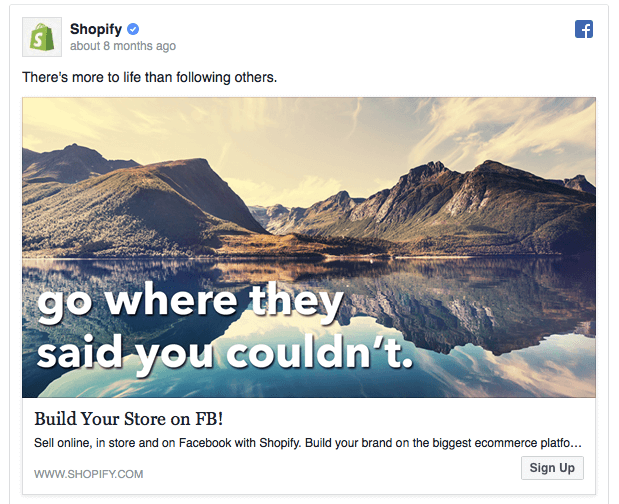
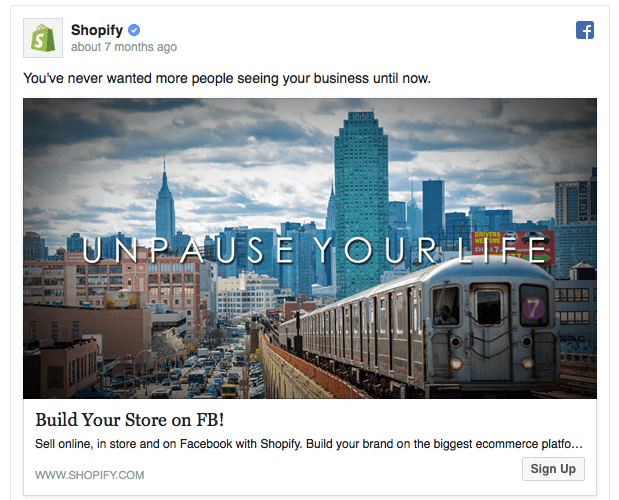
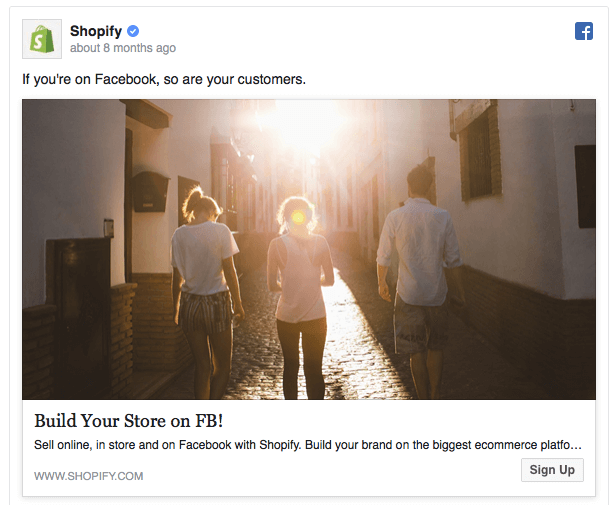
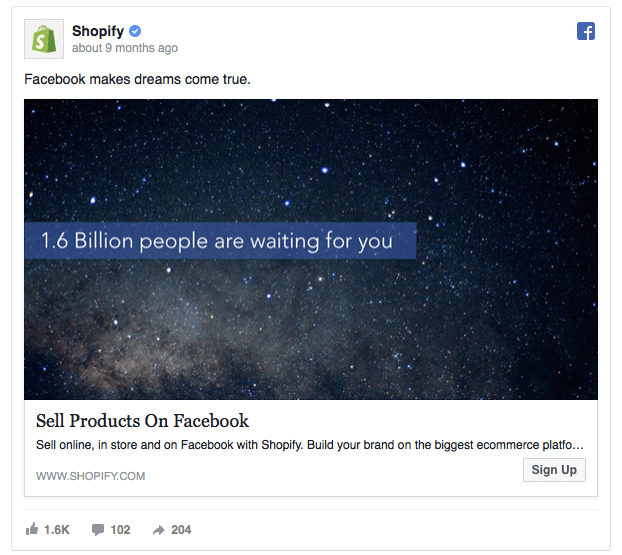
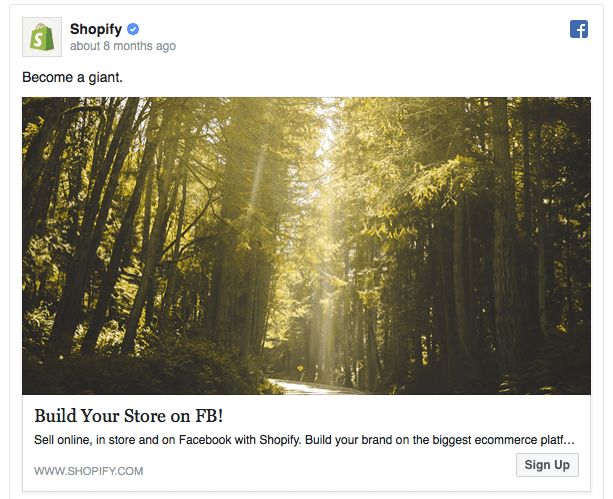
People seeing all these ads will never get bored as they’re all different.
To fight ad fatigue in your Facebook ad campaigns, regularly create multiple ad visuals for the same product offer. As one ad’s frequency has come close to 2.5, pause it, and start the next ad variation.
Rotate your ads every 3-4 days to avoid the impression that you’re bullying your audience with the same ads over and over again.
It’s enough to have 5 ad variations to begin with. If you’re interested in creating more different ad combinations, use an automation tool (like AdEspresso) to quickly set up campaigns with up to 250 ad variations.
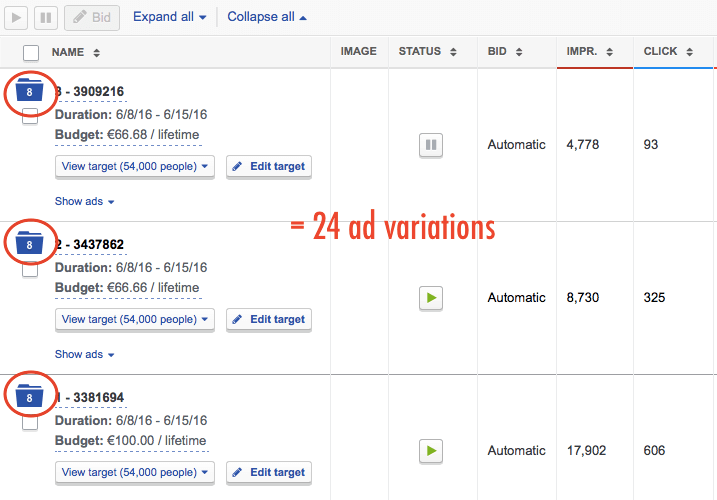
But how to come up with all these new visuals for tens of ad variations?
Up next, we’ll share a few quick hacks to keep your ad images looking like they’re fresh out of the oven.
5. Change your ad’s background color
People respond to different color combinations in various ways.
Colour blue ignites the feeling of calmness and clarity, yellow makes us feel happy and optimiztic, green is the color of peace and refreshment.
Depending on the person’s current mood, they interact with your ads in diverse ways. Someone in a good mood might ignore your dark-colored ads while an agitated person could be drawn to ad tones that spark peaceful feelings.
If there’s one specific color you’d like people to associate with your brand, play with light and dark hues, like LinkedIn has done here:
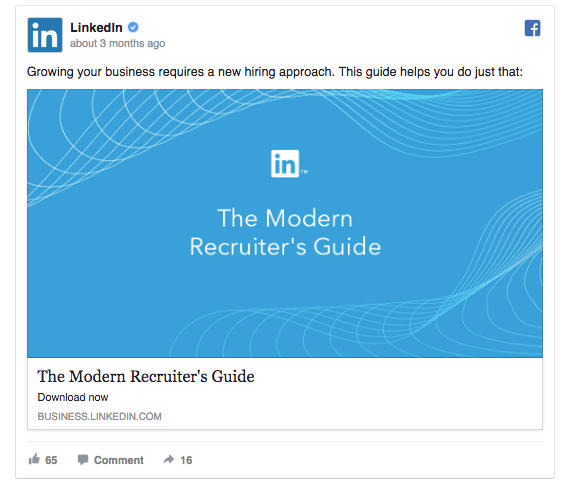
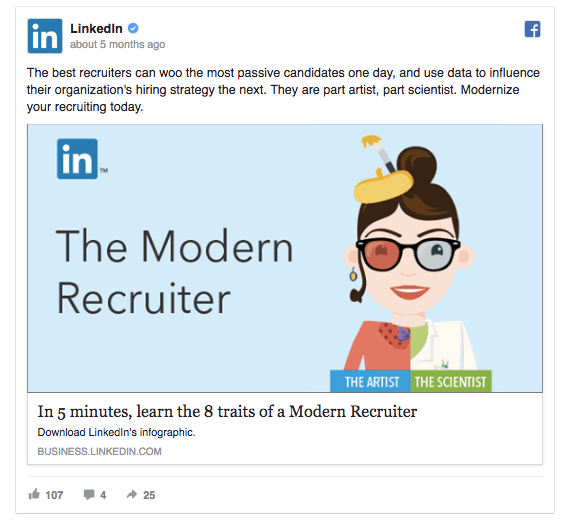
After you’ve created new ad visuals, follow the previous rule and start rotating your ads, keeping the frequency under 2.5 to 3.
6. Reverse your ad images
This might sound like the dumbest hack of them all, but it actually works!
After reversing our ad images for an awareness campaign, we saw an over 10% decline in cost-per-click.
In case you’re wondering, here are two examples of the ads we used:
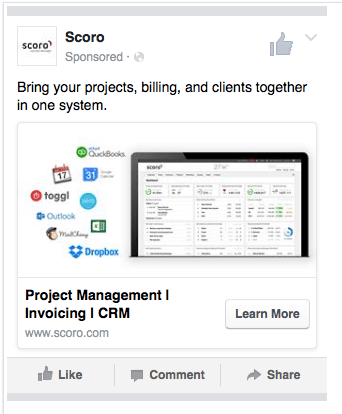
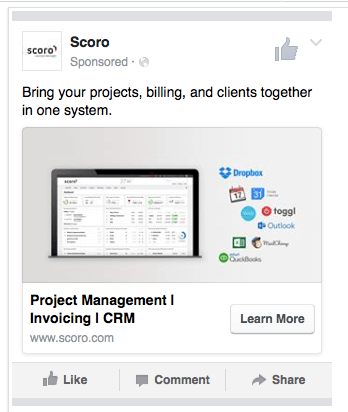
Reversing an image requires minimal effort from your creative team, but efficiently helps to fight ad fatigue.
Now that you’re familiar with two simple image editing hacks, let’s have a quick overview of other speedy options:
- Use free images relevant to the message – instead of creating an ad visual on Photoshop or Illustrator, use the good old combination of a message on the background of a free stock image (like the examples from Shopify above)
- Play with text on images – if you’re using a message on your ad visuals, try placing it from the left side to the right side, from top to bottom, etc.
- Remove the background – a clear and simple message or product shot with no background will catch people’s attention as it’s different from other Facebook News Feed content.
7. Rotate your ad schedule
I guess we can all agree on one thing – nobody likes to see the very same ads over and over again, every single day.
After seeing the same advertisement for three consecutive days, we all get this feeling of…
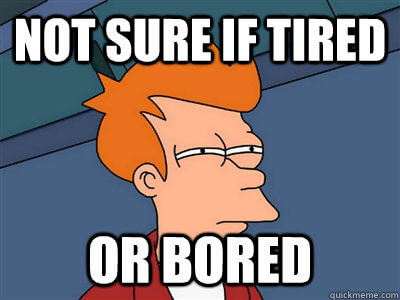
Source: quickmeme.com
One way to tackle this problem is by creating many various ads and rotating them manually.
But here’s another awesome hack for marketers who are constantly busy with other tasks: Use ad scheduling to show your ads on different days.
Ad schedule is super easy to set up in Facebook Ads Manager. It works on the ad group level, so make sure to place different ad visuals into separate ad groups.
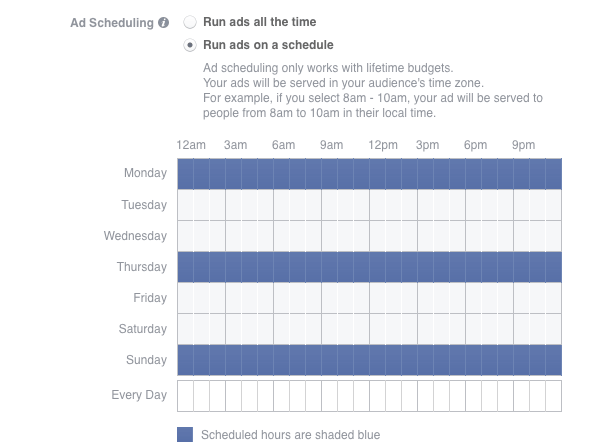
By using the scheduling technique, you can deliver a different ad to your audience each weekday. If people see a particular ad only once per week, they won’t get as tired and bored.
Already excited to try this hack? So were we when we first heard about it.
If you’d like to dig deeper into further hacks, here are the 6 Facebook advertising hacks I wish we had known before launching our very first campaign.
8. Improve you value offer
We’ve talked a lot about the power of engaging ad visuals but what about the messages you present to the audience?
If you’re constantly using the very same value offer you’re missing out on all the possibilities of A/B testing.
I love these examples by the New York Times.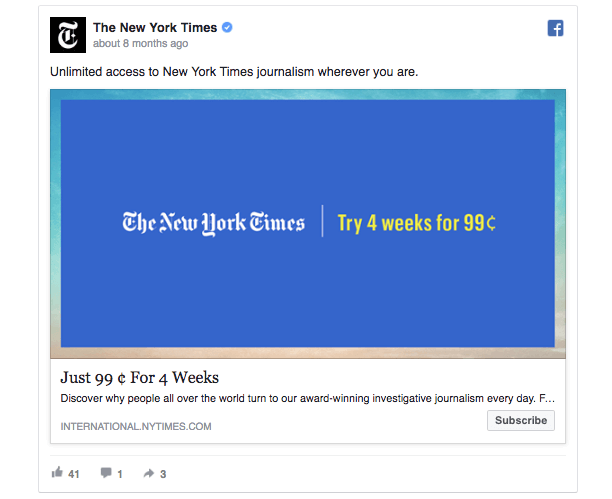
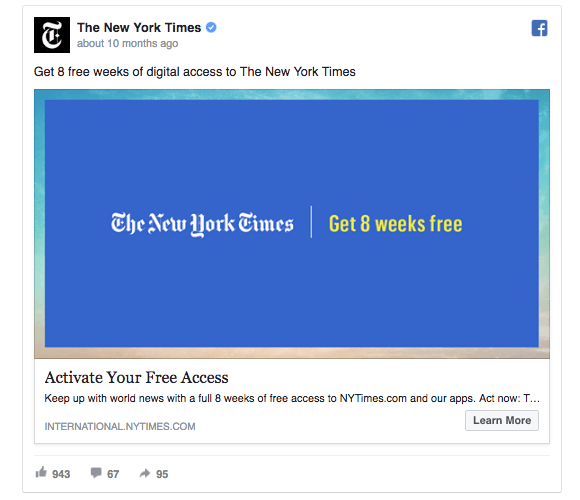
These two ads look painstakingly similar. They also have the same goal – get people to subscribe to the monthly plan.
What differentiates these two ads is the slightly different value offer.
The first ad asks for a little commitment while the second one gives the subscription away for free. You can only guess which one has a higher conversion rate after 2 moths time.
Use various value offers in your Facebook ads to fight the ad fatigue and to keep people interested in your proposal.
You can also apply Facebook advertising as the litmus test for new value offer to see which one works the best (later, you can replace your current home page UVP with the new one).
See this guide to writing great Facebook ad copy for more ideas.
9. Shift your campaign objective
Sometimes, the best way to sell a product is by not selling it at all.
Let me explain.
We’ve all heard the stories about the countless benefits of content marketing. By providing valuable information and helpful guides to your audience, you’ll slowly build interest and trust in your brand and product.
So why not use Facebook ads not only for selling but also for nurturing the relationship with your prospects.
Create an e-book, share blog posts, or give something totally different away for free. All these activities help to build brand awareness while not bothering people with salesy messages.
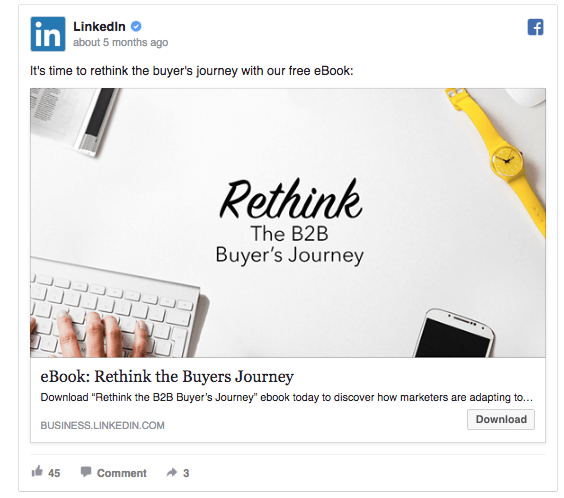
By varying sales messages with valuable content, you’ll build long-term commitment that will translate into subscriptions in months to come.
10. Rotate your target groups
How specific is your current audience targeting?
Are you using the full potential of your different audience groups or are you simply delivering the same ads to everyone?
The truth is, targeting closely knit audiences can significantly improve your ad performance (and keep away the ad fatigue).
To rotate your target audiences, split your current audience group into smaller divisions. Next, change the audience group of each ad group after a few days, before people get tired of seeing your ads.
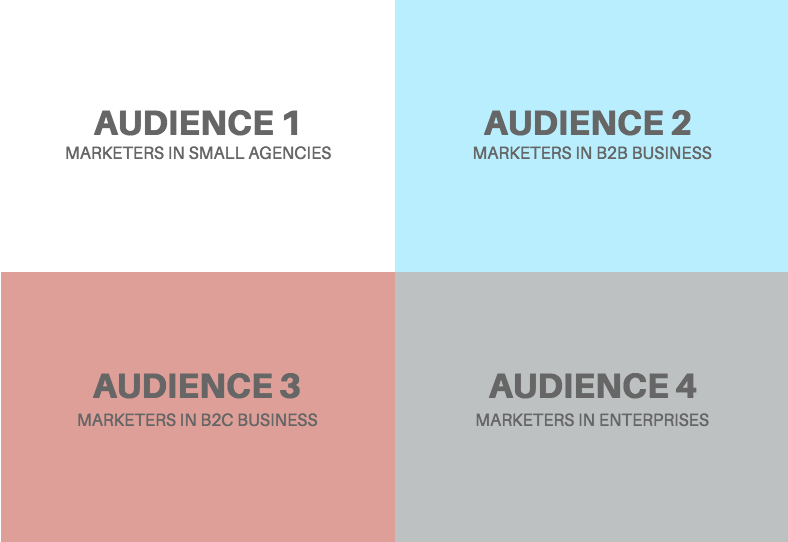
The audience rotating technique works the best if you have a large group of prospective clients, each having specific interests and characteristics that differentiate them as a separate group.
11. Exclude people who have engaged with your ads
Imagine you’ve seen the same ad for two consecutive days. So you decide to click on it, hoping to get rid of it for good. But nope, the ad is still showing up on your Facebook News Feed.
Annoying, right?
To avoid showing the ads after people have clicked on them, use this simple yet powerful hack:
Exclude the people who have already visited your ad campaign’s landing page.
Here’s how it works:
First, you need to use the Facebook pixels to create custom audiences of people who have visited your site in the past 60 days. You can also create a separate list of people who have recently signed up for your service or filled in a form.
Second, use Facebook’s Power Editor to exclude these audiences from your targeting lists and only serve ads to people that haven’t yet clicked on them.
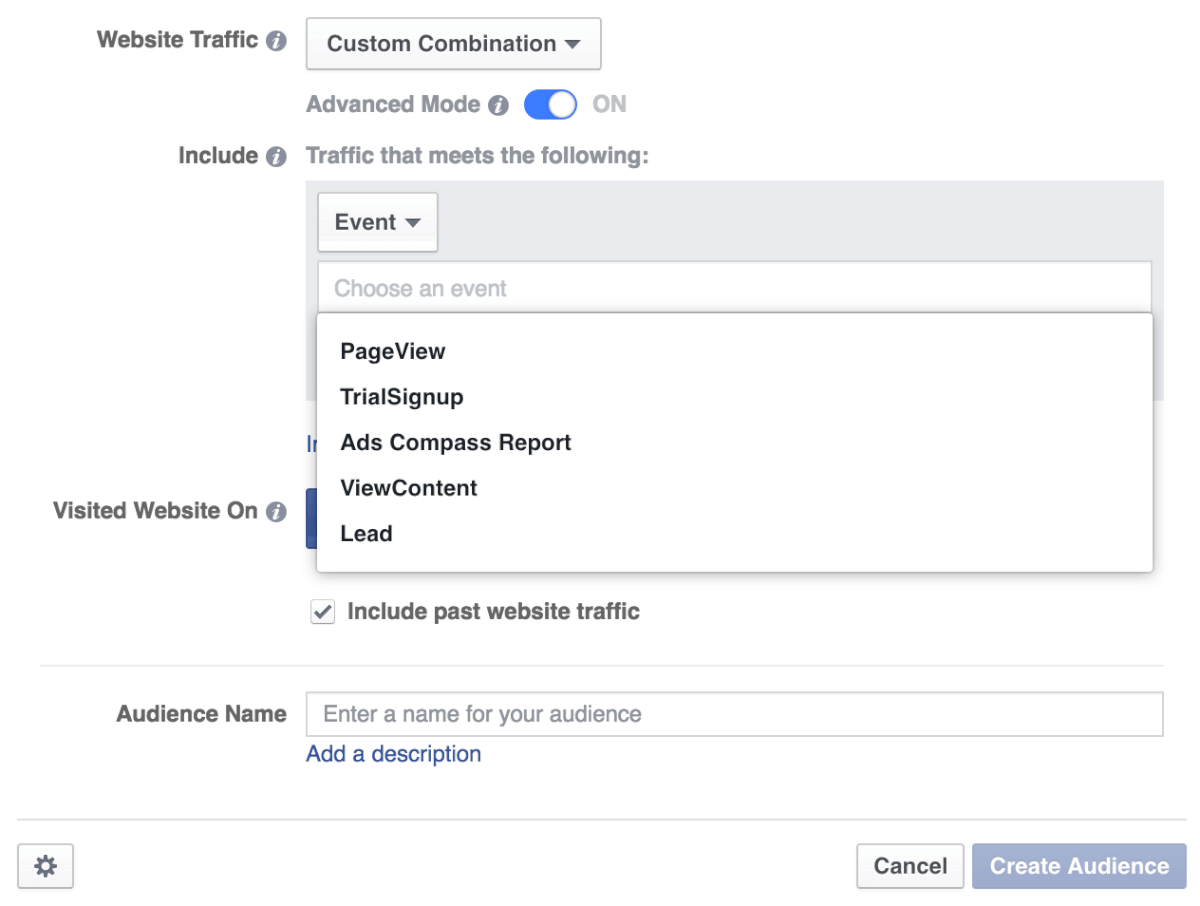
If you’re interested in tracking in-app activity, Facebook also has this area covered.
For the complete overview of custom audiences, see this guide by Massimo Chieruzzi.
12. Use daily unique reach optimization
Facebook knows that ad fatigue is a big problem.
And it wants to give you the magic sword to fight against the Banner Blindness monster.
If you’re not yet using the Power Editor, here’s one more reason to do it: you can optimize your ads for daily unique reach.
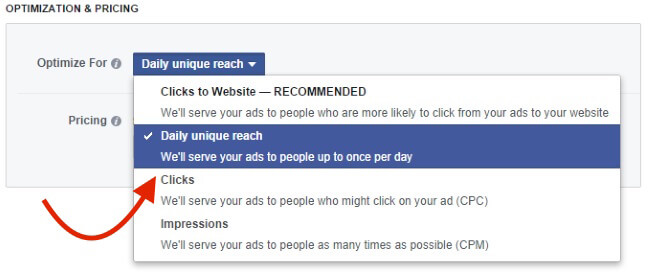
There are many case studies that have shown the cost-per-click go up by using this optimization method. But it’s definitely worth testing what works the best for you and your Facebook campaigns.
Now that we’ve been trough all these methods of fighting ad fatigue, I want to add one more thing.
There’s one word I want you to take away from reading this article: INNOVATE
Innovate while creating new ad visuals, innovate when working on campaign messages, innovate when using the countless optimization hacks to improve the ROI of your advertising.
It’s the most effective way of ensuring that your audience won’t get bored.
Just to be sure, let’s revisit all the 12 techniques to fight ad fatigue that we mentioned earlier. You can use the following as a checklist for reviewing your ad campaigns.
- Keep your ad frequency low
- Set up optimization rules based on ad frequency
- Use different ad placements across campaigns
- Rotate your ads / use different visuals
- Change your ad’s background color / play with the layout
- Reverse your ad images
- Rotate your ad schedule / show ads at specific times
- Review and improve your value offer
- Shift your campaign objective
- Rotate your target audiences
- Exclude people who have engaged with your ads
- Use daily unique reach optimization
Now that you’re equipped with all this new knowledge, it’s time to head out and improve your ad campaigns and fight the Banner Blindness monster.
If you’ve come across more exciting hacks for fighting ad fatigue, let us know in the comments section!
[ad_2]
Source link
Social Media Agency, Social Media, Digital Marketing, Digital Marketing Agency, Search Engine Marketing, SEO, digital marketing agency dubai, video content marketing, crossfit marketing dubai, video marketing dubai, digital marketing agency abu dhabi, facebook marketing dubai, facebook marketing abu dhabi, digital marketing agencies in dubai, social media agency, content marketing dubai, content strategy dubai, branding dubai

